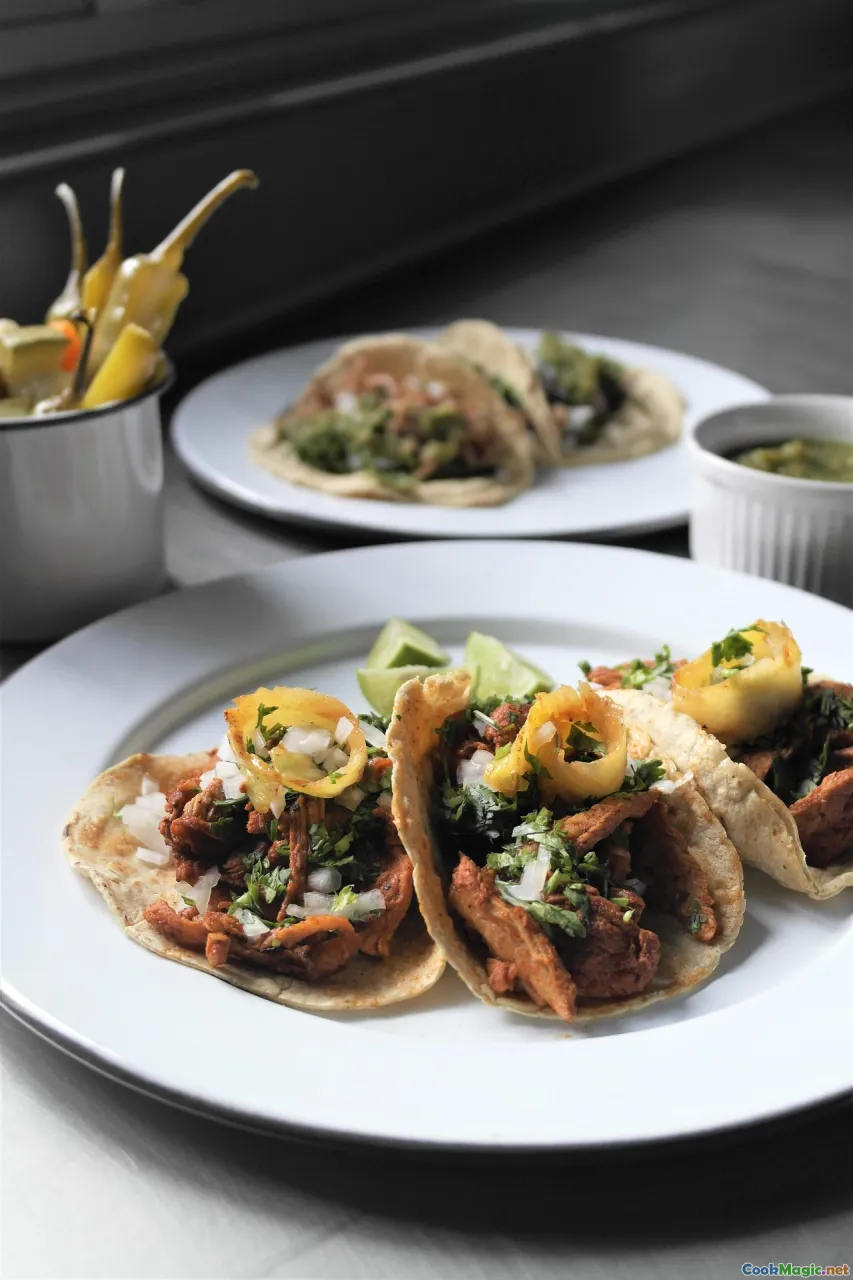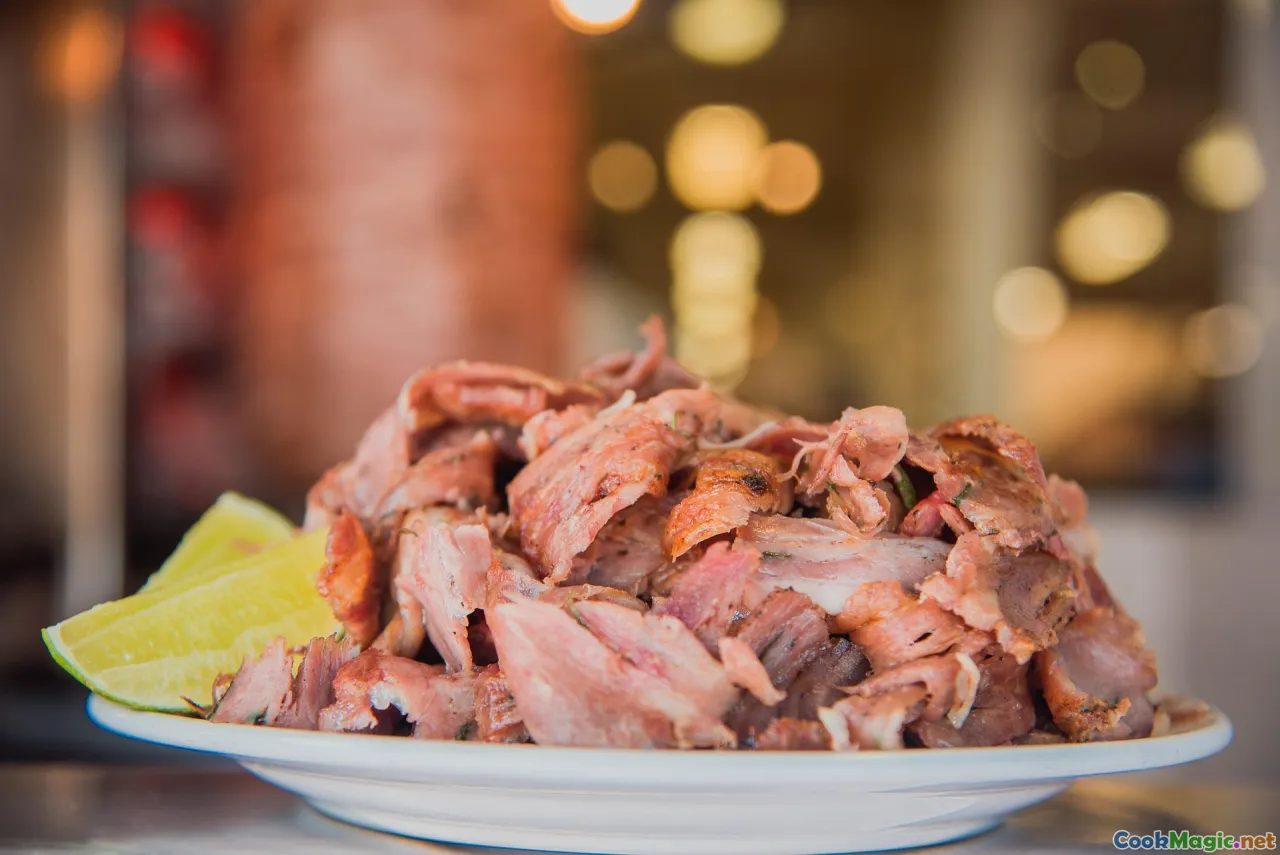Tasting Mexico’s Real Tacos al Pastor
12 min read Experience authentic Tacos al Pastor, exploring traditional flavors and cultural origins behind Mexico's iconic street food delicacy. September 29, 2025 21:05
Tasting Mexico’s Real Tacos al Pastor
There’s a ritual in Mexico City’s bustling street markets, an aromatic dance that beckons every food lover: the sizzle of marinated pork spinning slowly on a vertical spit, smoky incense mingling with the sweet scent of caramelized pineapple. Tacos al Pastor aren’t just a quick bite—they’re a cultural mosaic, a tale spun in spices, flames, and communal joy that has captivated palates for generations.
Walking through the vibrant streets of CDMX, the aroma alone sort of plants a seed of anticipation; it’s an olfactory map guiding you to authenticity. But what makes the “real” tacos al Pastor so different from imitations? And how can you savor the craft in its truest form, whether in a bustling street stall or your home kitchen? Let’s delve into the heart and soul of this iconic Mexican street food.
The Origins of Tacos al Pastor

It’s a sediment of history—an extraordinary blend of cultures that tells a story about migration, adaptation, and ingenuity. The roots trace back to Lebanese immigrants who arrived in Mexico in the early 20th century, bringing with them the tradition of shawarma—meat cooked on a vertical rotisserie. Over time, this influence fused with local ingredient traditions, leading to the creation of tacos al pastor—literally "shepherd style" tacos.
The original spit, called a trompo, became a Mexican innovation—occasionally infused with achiote paste, which dyes the meat a vibrant reddish hue and imparts a distinct smoky, slightly sweet flavor. The amalgamation of Middle Eastern technique with Mexican ingredients birthed an entirely new street food paradigm—combining spices, marinated meats, and the iconography of roadside stands.
The Crucial Ingredients: Marinating and Spicing

What makes an authentic taco al pastor? The key lies in the marinade. The meat—traditionally pork shoulder—is thinly sliced, then generously coated with a marinade made from guajillo and ancho chilies, achiote paste, garlic, cumin, oregano, crushed pineapple, and vinegar.
This marinade is a flavor explosion—herbaceous, smoky, sweet, and tangy all at once. As the pork soaks, the spices penetrate deeply, transforming simple pork into a complex dish. The inclusion of pineapple not only adds sweetness but also assists in tenderizing the meat, ensuring a juicy bite amid the charred exterior.
The Art of Assembling and Cooking

In a street stand or taquería, the process is as much an art as it is a tradition. The marinated pork is layered onto the trompo, often topped with a small pineapple wedge for extra flavor. The spit turns slowly, letting the slices sizzle in their own juices and develop a tantalizing caramelization.
As the meat cooks, a vertical knife or skewer slices thin, crispy edges that are then chopped off and placed onto freshly made corn tortillas. The crunch of the caramelized pork, the burst of juice from the pineapple, and a splash of tangy salsa create a harmony of textures and flavors.
What Defines 'Authentic' Tacos al Pastor?
Authenticity isn’t just about ingredients—it’s about the devotion, the technique, and the cultural context. In true Mexican tradition, tacos al pastor are often served with finely chopped white onion, cilantro, a squeeze of lime, and “salsa roja,” which varies from smoky chipotle to bright tomatillo. The tortillas should be soft yet resilient enough to hold a generous portion of meat. Allow yourself to encounter variations—from the smoky burnished meat to the subtle sweetness of pineapple—each stand or taquería might slightly differ, but the heart of authentic al pastor is always recognizable.
Exploring Mexico City’s Top Tacos al Pastor Spots
For those seeking the real deal, certain places have garnered iconic status among locals and travelers alike. El Tizoncito, famously credited as one of the first places to serve tacos al pastor in Mexico City, offers a crispy, flavorful bite along with its legendary history. Another favorite is Taquería Los Cocuyos, nestled in the historic center, where cigar-smoking cooks expertly carve meat from the trompo onto freshly steamed corn tortillas, serving tacos that are rich, smoky, and bursting with flavor. The secret often lies in the marinade’s seasoning balance and the patience in slow roasting, which develops the layered flavors that define the street food’s character.
Making Tacos al Pastor at Home: A Step-by-Step Guide
Creating an authentic taco al pastor in your own kitchen can be an exciting challenge, but it’s absolutely doable with a few key steps:
Ingredients:
- 2 lbs pork shoulder, thinly sliced
- 1/4 cup achiote paste
- 3 dried guajillo chilies, soaked
- 2 ancho chilies, soaked
- 4 garlic cloves
- 1/4 cup pineapple juice
- 2 tbsp apple cider vinegar
- 1 tsp cumin
- 1 tsp oregano
- Salt, pepper, and oil
- Small pineapple wedge for topping
- Corn tortillas
- Fresh cilantro and onion for garnish
- Lime wedges
Process:
- Prepare the Marinade: Blend soaked chilies, achiote paste, garlic, pineapple juice, vinegar, cumin, oregano, salt, and pepper until smooth.
- Marinate the Pork: Coat the sliced pork thoroughly and refrigerate for at least 4 hours, ideally overnight.
- Cook the Meat: While traditional al pastor uses a vertical spit, you can grill or pan-fry the marinated slices, aiming for caramelization.
- Serve: Warm tortillas, top with seasoned pork, pineapple, cilantro, onion, and a squeeze of lime.
Tips for Success:
- Use pork shoulder for ideal marbling.
- Include a slightly sweet element like pineapple juice to enhance flavor.
- Don’t rush the caramelization; patience results in depth of flavor.
- For authentic presentation, pretend you’ve got a trompo in your backyard!
How Tacos al Pastor Became a Cultural Icon
Few street foods have achieved the cultural iconic status of tacos al pastor. Beyond feeding crowds, they symbolize Mexican ingenuity—the fusion of indigenous and immigrant influences, the vibrancy of street commerce, and the communal aspect of sharing food.
At festivals and street gatherings, you’ll see long lines echoing with laughter, musky smoke rising, and the universal language of tasting and sharing communal history. Tacos al pastor are more than food—they are a celebration of Mexico’s layered identity.
Elevating Your Tasting Experience

To truly appreciate tacos al pastor, focus on every sensory element. Observe the rich crimson hue of the meat, listen for the gentle crackle as it hits the hot skillet, inhale the smoky spice again and again, and finally let the flavors burst in your mouth—succulent, spicy, sweet, and tangy.
Pair your tacos with a traditional Mexican mineral water, a cold cerveza, or even a fiery mezcal—each elevates the experience in a different way. Use vibrant garnishes, a spritz of lime, and a generous handful of fresh cilantro to amplify the visual and taste dimensions.
And remember, the best tacos al pastor happen with a sense of delight and reverence for tradition—each bite a small voyage into Mexico’s culinary soul.
Closing Thoughts
From the historic roots in Lebanese-Mexican fusion to the fiery, smoky tacos served on street corners today, al pastor embodies Mexico’s dynamic cultural tapestry. Sampling a truly authentic taco al pastor is more than a flavor adventure—it's a journey into tradition, community, and culinary craftsmanship. Whether you’re savoring tacos along a crowded city street or attempting your own at home, remember that each tender slice of pork carries stories of resilience, innovation, and the warm spirit of Mexican street food culture.
So next time you feel drawn to the bright glow of a street stand, let your senses guide you—there’s a story sizzling right in front of you, waiting to be tasted.













